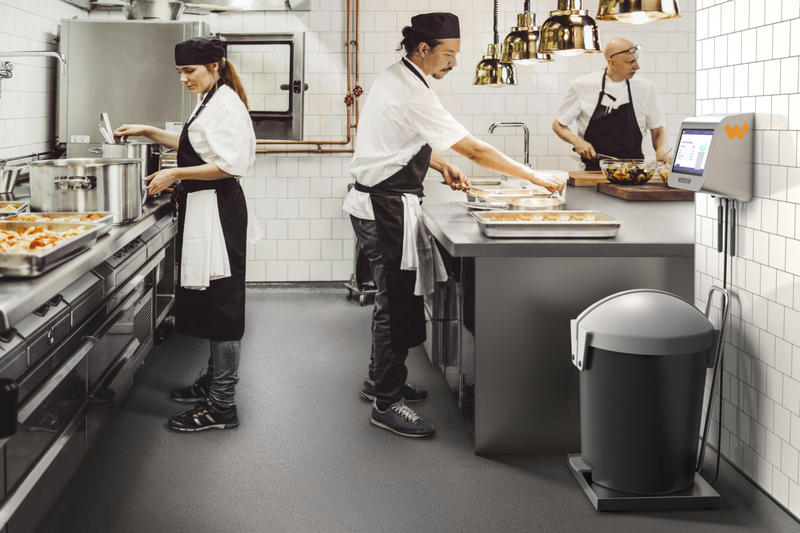Jeremy Sigmon is currently pursuing his MSc in water science, policy, and management with the School of Geography and the Environment. He joined Oxford with 15 years of experience in the U.S. green building industry which is when he had his first of many inspiring sustainability conversations with global food waste expert and entrepreneur Marc Zornes, co-founder of Winnow, one of the top 100 fastest growing companies in Europe.
Whether in our homes, at the market, in transport from farms, or at the restaurant, food is so often wasted. In developed countries, most of the waste occurs in kitchens or is left on the plate, since the food supply chain has been generally optimized so that minimal food is wasted from farm to market. In less developed countries, the inverse is true: food may spoil at ports, in transport, or at the market due to inefficient supply systems, but the food that is purchased by consumers is usually consumed.
With a fast-growing global population and increasing pressures on global resources exacerbated by climate change, some have begun looking at increasing the end-to-end efficiency of our food system, from farm to fork, as an essential way to ensure we can feed the world today and tomorrow (see also McKinsey’s Resource Revolution, which Zornes coauthored). What’s more, Marc Zornes has also discovered that fixing the problem is good for the environment and profitable, too. I sat down with him to learn more about it.
Jeremy Sigmon (JS): Food waste appears to be a much bigger issue than I had previously imagined, and you think a lot about it. What keeps you up at night?
Marc Zornes (MZ): Food waste is one of the biggest environmental issues we have today. We now know this because our data on the scale of the problem are getting clearer. 30% of all food that is grown is never eaten. This is a $1 trillion problem that will grow to $1.5 trillion by 2030. What keeps me up is how we scale solutions to address this issue. This is one of the clearest win-win opportunities in environment and business. We save money by throwing away less food, it is better for the environment, and it’s morally the right thing to do. Fortunately, there are a growing number of solutions out there that can be scaled to address this issue.
JS: How is circular economy thinking finding its way into the food industry?
MZ: The Ellen MacArthur Foundation just released a major report that explores this topic: ‘Cities and Circular Economy for Food’. For starters, nature’s food system is circular. The question is how to reorient the industrial food system we’ve built. Fundamentally, this begins with redesigning systems that radically minimize waste. We then need robust systems for nutrient recovery rather than disposal. Landfills release lots of methane gas and – for safety reasons – are actually not designed for decomposition. We’ve found nutrient-rich cabbage in a landfill still trying to decompose decades later. We need a coherent, systems approach to ensure we neither waste food nor lose its nutrients.
JS: I understand you’re focused on commercial kitchens. What’s your approach?
MZ: We focus in on commercial kitchens because they have a big economic opportunity in food waste prevention. Kitchens throw away about 15% of the food they buy, and the majority of the waste happens before it even gets to a plate. By providing analytics on the waste generated and supporting the production planning process of the kitchen, we ultimately help cut the value of food waste in half or more. This leads to big cost savings for the kitchen – from 3% to 8% of what they spend on food. Of course, this is also a very attractive investment. We deliver a 200% to 1,000% ROI to our clients in the first year.

Winnow Vision, released in March, is the newest weapon in the war on food waste, and powered by artificial intelligence.
JS: I just read about a new Winnow technology that could be a game-changer. Tell us more!
MZ: The original ambition of Winnow was to use artificial intelligence (AI) to measure and analyse food waste in kitchens. In order for food waste monitoring and measurement to be seamlessly integrated into a very busy commercial kitchen, you really need a fully automated system. When I founded Winnow in 2013, this automation wasn’t possible, so we built a system that asked staff to identify the food wasted on a touchscreen tablet. Winnow Vision, our latest product, is the realisation of that original ambition. Winnow Vision is a camera-based system that looks into the bin and uses computer vision to identify all food being wasted. It really is a game-changer for our business and a great, practical example of AI for good.
JS: What parting words of wisdom do you have for students of the circular economy and social enterprise?
MZ: There’s a massive opportunity in helping the world transition to a low-carbon, more circular economy. My biggest advice: if you have something you believe in that needs building, build it. We don’t have a lot of time and we need more solutions to scale. It’s hard work for sure. That said, it’s the most rewarding work I’ve ever done.